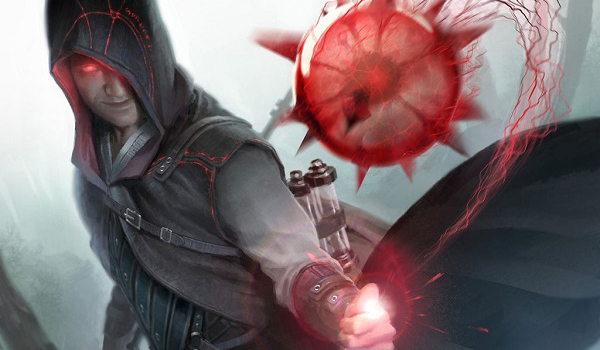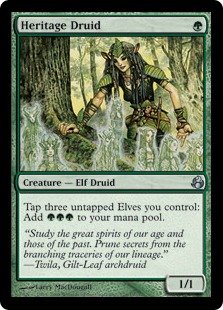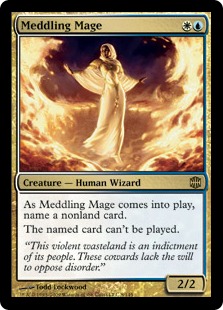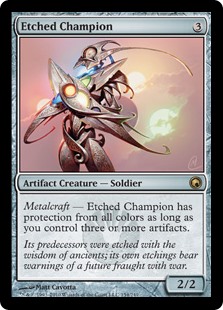Are you a Quiet Speculation member?
If not, now is a perfect time to join up! Our powerful tools, breaking-news analysis, and exclusive Discord channel will make sure you stay up to date and ahead of the curve.
Another week, another Star City Open, another round of data collection. As a general observation, the metagame diversity on display is remarkable. As the data will show, there are numerous viable archetypes and considerable diversity within those archetypes. However, clear front-runners are emerging. Should these continue through Regionals I think the metagame tiering will emerge.

I will be going into more detail when I actually present the data, but the lack of Blood Moon decks in this meta is still really surprising. The number of decks that either actually or functionally fold to the card is staggering. I assume this is due to the lack of a good shell, but if Jeskai is making a comeback I would expect Blue Moon to reemerge as its predator. They're extremely similar, but Blue Moon was nearly pre-sideboarded against Jeskai and has Blood Moon to just win. The fact that it hasn't is confusing. Is the deck actually bad, or are players just afraid of trying it because they think it's bad?
The Day 2 Metagame
The first thing worth noting about the Cincinnati Open is that it was apparently much smaller than Charlotte. Day 2 consisted of 67 players compared to the previous 128. The drop-off is staggering, suggesting it was half as large as the previous week. Knowing nothing of the local Magic scene, I imagine that it's the result of last weekend being Homecoming/midterms for many schools so they didn't come out. Also, it is Cincinnati; we can't expect too much. Urban mockery aside, it's a very interesting data set, as you may see from the top decks.
| Deck | Total |
|---|---|
| Grixis Death's Shadow | 7 |
| Counters Company | 7 |
| Gifts Storm | 4 |
| Elves | 4 |
| Infect | 4 |
| Five-Color Death's Shadow | 3 |
| Scapeshift | 3 |
| Affinity | 3 |
| Eldrazi Tron | 3 |
| Burn | 3 |
| Jund | 3 |
| BW Eldrazi and Taxes | 3 |
| Abzan | 2 |
| Jeskai Control | 2 |
| GB Tron | 2 |
Worth noting that last week the Day 2 table was a tiny fraction of the represented decks, while this time it's a large majority. This may be a function of the smaller size of the tournament, or it could be that the crowd was naturally more homogeneous. Impossible to say.
It is interesting that the old consensus best decks, Grixis Death's Shadow and Counters Company, were the most represented decks. A few months back they were everywhere, and while GDS continues to be a force, Counters had almost disappeared. Jeskai began to rise around the same time, which doesn't surprise me. I've become something of a broken record on this, but Counters Company is fundamentally fragile. Playing tons of cheap removal is excellent against them. Jeska's non-presence in Day 2 is almost certainly linked to CC's ascendance in this meta.
 Scrolling down a bit, we see Storm has a strong showing, as does Elves and Infect. Elves is interesting because it was also present in the same numbers back in Charlotte, but did not make the Top 16. It would appear that it's very good at cutting through random decks, but once things get more focused it fails. The deck is extremely explosive, but not like Affinity. It has plenty of combo kills, but they're not as fast or reliable as Counters or Storm. It's a lot of different strategies meshed together and it's not quite good enough.
Scrolling down a bit, we see Storm has a strong showing, as does Elves and Infect. Elves is interesting because it was also present in the same numbers back in Charlotte, but did not make the Top 16. It would appear that it's very good at cutting through random decks, but once things get more focused it fails. The deck is extremely explosive, but not like Affinity. It has plenty of combo kills, but they're not as fast or reliable as Counters or Storm. It's a lot of different strategies meshed together and it's not quite good enough.
Also interesting, both week's Day 2 chart toppers are down in the bottom half of the table. The twin colorless menaces of Affinity and Etron only put three pilots a piece into Day 2, which is interesting given the makeup of the rest of the field. Their worst matchups aren't well represented, in fact they're both pretty good against GDS, though Counters can be unfortunate. I'd guess that it's a local popularity thing. You need to really dedicate yourself to Affinity to do well, especially in a world where everyone is ready for you. This limits the deck's appeal. Etron plays "Battlecruiser Magic" better than anyone, and that's not a game many players like. You have to be okay with doing nothing but playing lands into big beasts, so even when the deck is well positioned many players just don't want to play the deck. As a result, I'm not reading anything into those numbers. It's the Top 16 that really matters anyway.
Cincinnati Open Top 16
And they're not really here either—just one copy of Affinity. I guess colorlessness is (finally) becoming a liability. Despite its smaller scale, this Open showcased a remarkable diversity of decks. Players who watched the coverage know that there were a lot of unique decks on display, at least for Day 1. They started focusing in on the same players as Day 2 wore on. The deck results confirm this, with eight different decks in the Top 8. The Top 16 continues this trend.
| Deck | Total |
|---|---|
| Gifts Storm | 3 |
| Counters Company | 2 |
| Humans | 1 |
| UG Merfolk | 1 |
| Infect | 1 |
| Affinity | 1 |
| BW Eldrazi and Taxes | 1 |
| Death and Taxes | 1 |
| Jeskai Control | 1 |
| Ad Nauseam | 1 |
| UW Control | 1 |
| Five-Color Death's Shadow | 1 |
| Bant Company | 1 |
Once again, the only UG Merfolk deck to make Day 2 is in the Top 8. This still doesn't mean anything statistically, but it is very interesting. I don't really know what the story is so there's nothing to conclude. If it's a tale of a lone representative slicing through all comers then the deck has serious potential. If that player is just blessed by the pairings god and runs extremely hot all weekend while all the other Fishermen fail Day 1, that's not really a result. That's just luck. And the curse of not having Day 1 data available to see.
Storm is another matter. Four decks made it into Day 2 and three made Top 16. Of course, two of them squeaked in at 15 and 16, but that's irrelevant statistically. Storm is the real deal, people. Its enemy Grixis Shadow did far worse, interestingly. Seven decks made the cut yet none are present here. There's only a single Five-color Shadow deck. I don't see anything inherent in the Day 2 archetypes to indicate this collapse. Either fate intervened or everyone was ready for Shadow, and as previously discussed, Shadow really can't handle being targeted.
 Despite the good showing, Storm did not win again this weekend—this should come as no surprise if you look at the winning decklist. Maindeck Thalia, Guardian of Thraben, Meddling Mage, and Kitesail Freebooter say one thing very loudly: I'm not losing to Storm! It worked, and frankly the Ethersworn Canonists are overkill. Take that lesson to heart: persistent disruption and a clock beat Storm.
Despite the good showing, Storm did not win again this weekend—this should come as no surprise if you look at the winning decklist. Maindeck Thalia, Guardian of Thraben, Meddling Mage, and Kitesail Freebooter say one thing very loudly: I'm not losing to Storm! It worked, and frankly the Ethersworn Canonists are overkill. Take that lesson to heart: persistent disruption and a clock beat Storm.
The rest of the Top 16 is eclectic, but the really interesting list is Infect. Whether this means the deck isn't truly dead is hard to say, mostly because I think a great deal of its success came from the brilliant sideboard plan. Invisible Stalker is an excellent transformative plan against a lot of decks, and a great example of what I've said before about such plans. I have to believe that Kenyon Collins earned a lot of free wins thanks to this juke, and that, more than Infect's viability, that's what earned him a Top 8. Regardless, I'm going to start running more Spell Snares just in case.
Cincinnati Classic Top 16
Onto the Classic results. I'm still a little skeptical of their value relative to the Opens, but at this point I'm desperate for data. It's also been argued to me that Classics contain a lot of decks that scrubbed out of the Open, and so indicate the Day 1 metagame. This is a decent point, though I'm not sold on its veracity. Still, an analyst works with the data he's given. And this is a very interesting data set.
| Deck | Total |
|---|---|
| Affinity | 3 |
| Eldrazi Tron | 3 |
| Burn | 1 |
| Mardu | 1 |
| GR Devotion | 1 |
| Infect | 1 |
| Gifts Storm | 1 |
| Mono-Green Tron | 1 |
| Counters Company | 1 |
| Ad Nauseam | 1 |
| Grixis Death's Shadow | 1 |
| Jeskai Control | 1 |
Apparently, all the colorless decks went to the Classic instead of the Open. Affinity even closed out the finals. My best guess is a favorable environment. Again, I'm not seeing decks that are known to be good against either Affinity or Etron. They're powerful enough that they just get there if you aren't ready and it looks like the Classic wasn't. Worth noting, the Infect list that top-eighted the Classic does not have Invisible Stalker. I'd guess that he was secret tech and am curious to see if it catches on now that the secret's out.
Just like last week, there's a Mardu list here. I don't have much to say about the deck; it's just really interesting that it keeps cropping up in Classic results. Is this a case where it can only make it through a Classic and lacks the legs for a longer tournament, or do Mardu players only run them at smaller events? I don't know. I doubt there's a good answer, but it's an interesting speculation piece. I'm glad it's not popular or successful, frankly. My decks have poor matchups against All-the-Removal.dec.
Aggregated Metagame
With that done, let's put it all together. Last week I put the results together to form the Charlotte metagame. I'll skip that this week, if you don't mind. Looking at the metagame of a given large tournament can be instructive, but that's not my goal. We're trying to get a handle on the metagame going into GP Oklahoma City and the Pro Tour, so we need to put all the data together. So that's what I did and will continue to do going forward.
| Deck | Total |
|---|---|
| Gifts Storm | 8 |
| Affinity | 8 |
| Jeskai Control | 6 |
| Grixis Death's Shadow | 4 |
| Infect | 3 |
| Counters Company | 3 |
| Eldrazi Tron | 3 |
| Abzan | 2 |
| UG Merfolk | 2 |
| Mardu | 2 |
| UW Control | 2 |
| Ad Nauseam | 2 |
| Breach Titan | 1 |
| Jund | 1 |
| Saheeli Evolution | 1 |
| BW Eldrazi | 1 |
| 8-Rack | 1 |
| Temur Aggro | 1 |
| GR Scapeshift | 1 |
| Knight Company | 1 |
| GW Company | 1 |
| GR Ponza | 1 |
| GB Tron | 1 |
| Humans | 1 |
| BW Eldrazi and Taxes | 1 |
| Death and Taxes | 1 |
| 5-Color Death's Shadow | 1 |
| Bant Company | 1 |
| Burn | 1 |
| GR Devotion | 1 |
| Mono-G Tron | 1 |
That is...a lot of deck names. Starting next week I'll be culling singletons from this table. I imagine that I'll be upping the cut-off in a few weeks time too. I'm not interested in what did well at one tournament, but about finding a deck's actual metagame strength. If it can't muster at least another result by next week, they're outliers. Besides, if I don't start trimming then this article series will become nothing but the aggregate metagame table. That's not an article, that's a bad Powerpoint presentation. I can do better than that.
 The data is also what you'd expect given the online chatter and the actual strengths of the decks. Affinity and Storm are on top followed by Jeskai. After that there is a steep drop off, with lots of three- and two-ofs. This suggests two things. The first is that players who have stuck by their decks (Affinity) are, as everyone always bangs on about, advantaged. Which makes sense, and is validating for all the times I've said it. We also have unfair combo doing well, for the first time in a while. It is too early to tell whether this is a new normal or a function of slow adjustment. It therefore follows that a deck that interacts favorably with both is in third place. That's how we'd expect it to work in a healthy metagame in an adjustment period.
The data is also what you'd expect given the online chatter and the actual strengths of the decks. Affinity and Storm are on top followed by Jeskai. After that there is a steep drop off, with lots of three- and two-ofs. This suggests two things. The first is that players who have stuck by their decks (Affinity) are, as everyone always bangs on about, advantaged. Which makes sense, and is validating for all the times I've said it. We also have unfair combo doing well, for the first time in a while. It is too early to tell whether this is a new normal or a function of slow adjustment. It therefore follows that a deck that interacts favorably with both is in third place. That's how we'd expect it to work in a healthy metagame in an adjustment period.
It looks like we're getting some trends going, but I urge you to remain cautious. Two data points do form a line, but that is not the same as a trend. More data is needed. Consider that Counters Company and Eldrazi Tron did not appear on the table last week. With a pool this small, minor variations have a huge effect. The data from the SCG Washington DC Classic may be wildly different, especially considering that it will likely be filled with Legacy players. It won't be until the data from Regionals comes in that I'll be willing to call anything a trend.
Regionals will be the real test. Drawing players from about two-thirds of the US (curse Star City pulling out of the West! No, Texas and California don't count), it comes close to a true random sample of the entire Modern player base. Once all that data is processed we should have enough for some actual conclusions.
A Picture is Forming
So what can we conclude from all this? First and foremost, don't ignore Affinity! When you don't pay enough attention to the mechanical menace it does Affinity stuff to you. Unless you want that to happen, plan ahead and pack your hate. The deck is vulnerable to hate; there is flexible and effective hate available. Use it. I stress this as a hard rule for a reason.
Secondly, come ready for Storm. Fast, unfair, non-creature combo is something relatively new to Modern. You could be forgiven for not knowing how to prepare for it, but not anymore. It's a known thing, you need to be ready. The maindeck strategy of disruption into a clock is very good here, and there is hate available. You don't have to live in fear, but you do need to know what to do. No excuses, know how your deck beats Storm. If you're going to struggle, find a sideboard plan.
Next week there's a Classic to add to the table, and some old business to conclude. See you then!




One minor nitpick, for SCG events you can NOT use the number of people making day 2 as a a proxy for the event size. Cincinnati had 773 players to Charlotte’s 538. The reason for the discrepancy in the day 2 sizing comes down to the fact that you had to have 21 points in Cincinnati to make day 2, whereas 18 points was good enough for Charlotte.
In a nutshell, to qualify for day 2 at an SCG open, one of two things must happen. Either you go 7-2 or better and automatically get in, OR you have a record at least as good as the 64th ranked player, because ALL players with the same number of points as 64th make day 2. Because of this, day 2s tend to be larger in smaller events (paradoxically), because below a certain point of attendance, 64th is likely to be at 6-3, which means ALL the other 6-3s get in.
Other than that, great article, keep it up!
I agree, but want to add one clarifying point. To qualify for day 2 at either event you needed to be 7-2 or be tied for 64th place. The smaller events tend to have someone at 6-3 in 64th place (carrying along everyone else at 64th place with them). This is what happened at Louisville (which I attended and which had < 700 players) and so I presume the same happened at Charlotte.
Ah the torture while my comment is awaiting moderation and I realize that I was mistakenly adding information that OP already included.
Wait, it works differently than GPs? More players equals fewer Day 2?
Yes, it can mean that (but it depends on the records).
This is the round 9 standings from Cincinnati (with 773 players):
http://static.starcitygames.com/www/scg_events/files/20171021194356000000.html
There were 67 players at 7-2 (21 points) or better so only those players made it to day 2.
Meanwhile Charlotte (538 players) had a round 9 results like this:
http://static.starcitygames.com/www/scg_events/files/20171014202726000000.html
As a smaller event, only 48 players were at 7-2 (21 points) or better. They all made it to day 2, but so did everyone who was tied for 64th (which was 18 point) made it to day 2. There were 128 players at 18 points, so that is how many people made day 2.
Nice article, thanks 🙂
If you’re culling decks from the list, is there room to keep back those decks which outright won a tournament? For a deck to win through 18 rounds requires a certain amount of consistency and metagame viability which I’d argue gives it a deserved spot, even if that spot has a ‘1’ next to it on your list.
Mainly I’m just stoked about the humans deck haha. Storm? Bring it on.
Thank You! The short answer is no.
Long Answer is as follows: Any deck can spike a tournament. Yes, it’s very unlikely that Mill or Soul Sisters will win a big event, but it can happen. That really doesn’t mean anything statistically. We’re looking to build up to the metagame trend, and as the data set gets larger by design the effect of those outlier singletons disappears. As a result there will be less reason to include them, even if they did win the thing. If you can’t maintain a presence, you’re not actually a player in the metagame. You’re just winning an event.
If Storm continues to be a huge factor I would expect Humans to see lots of play. However, I also know from experience that Jeskai and Affinity are hard matchups. We’ll see what develops.
I agree with the cut of the data for bigger meta analysis.
But will it be possible to have access to the file with the complete data? I can make use of it for smaller meta test. Each deck that makes a top 16/32 in those events can easily take out a FNM. That’s not the point of your articles and this site, but as I’m a more casual player I would appreciate it a lot.
Great work in any case. Keep on.
I wasn’t planning on making one, but I’m publishing all the raw data and the sources so there’s nothing stopping anyone else from doing so.
This is the best metagame analysis article ive read in a long time; great stuff. A good read with interesting insights while being clear and careful about the limitations of the sample. I am especially happy that you didnt try to turn the two weekends into some kind of story in which the decks are the characters.
Charlotte had a radically smaller size crowd due to Nationals being the same weekend. Normally they are a sell out or close to it and barely clearing 500 is ridiculous. Cincy getting close to 800 is pretty good and this time they did it without having insane delays like the last time they were there, so everyone was much happier 🙂
Currently there are 64 decks and we will get another 16 from the Classic in DC. 11 Regionals will provide 8 decklists each for a total of 168 decklists. That should be a pretty reasonable snapshot of the format. I have some suspicions about how it’s going to pan out.
Just a quick question. Choice to leave Jeskai Control lists that run 4 Snaps and a Gearhulk and a bunch of Colonnades as their win cons vs the Queller/Geist build merged into one general Jeskai Control category? Or is this just a function of SCG does a crap job of splitting that out?
There are 4 Jeskai Geist and 2 Jeskai Control lists that make up the 6 Jeskai Control lists from the Charlotte and Cincinnati Opens and Classics (which get bumped by 2 and 1 respectively in DC). I had been looking back at this today and just noticed they were merged into one category and thought I would ask.
SCG is pretty inconsistent about how they name decks, even very similar ones. I’m not splitting hairs over it; they want to call every Jeskai deck with Snapcaster Mage Control, so be it, I’ll merge it all together. That happened all the time with the old metagame updates anyway.